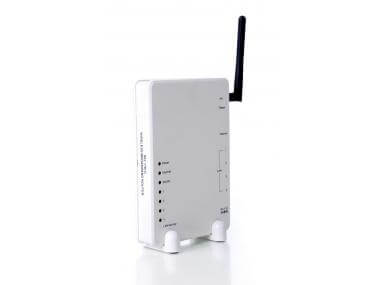How Fast Is Your Internet?
How fast is your internet connection? Is 10Mbps better than 10MBps? What’s the optimal internet speed for your network? Tech Talker takes a closer look at your home internet connection.

“I just listened to your podcast on home networking. I was wondering if you could tell me what speed I should look for in an internet service provider?”
Well Travis, that’s a great question!
I get this question a lot when friends and family are comparing internet plans. Unfortunately there isn’t one answer that works for everyone. The reason being is that people use the internet in completely different ways.
In today’s episode I’ll outline some things to consider when choosing your network provider and how to compare internet speeds.
Sponsor: Want to save more, invest for the future, but don’t have time to be a full-on investor? Betterment.com helps you build a customized, low-cost portfolio that suits your goals. Sign up at www.betterment.com/techtalker and receive a $25 bonus when you make a deposit of $250 or more.
Raw Speed
First things first – let’s look at raw speed.
When you see speeds advertised for internet plans, you’ll often see them reported as “up to __ Mbps.”
This may seem relatively straightforward, however it’s pretty deceiving. The first thing you’ll notice is that “up to” means that at your internet’s best performance, you’ll see that speed. This is an ideal speed which I’ve only seen reached a handful of times. From my experience, your actual internet speed will be about 10% less than the maximum advertised.
The next thing to watch out for is Mbps vs. MBps. The only difference is that one “B” is capitalized and the other isn’t. However this is a huge difference! Mbps stands for megabits per second, compared to MBps which stands for megabytes per second. I’ve mentioned in a number of previous episodes that there are 8 bits in 1 byte. So if you purchased an internet plan of 8Mbps that is actually only 1MBps. I know, I know it’s confusing.
This really matters when you’re transferring files, simply because if you have a file that is 8MB, it will take 8 seconds to transfer, instead of 1 second. Hopefully I’ve cleared that up, because that’s an issue many people encounter.
The next thing to consider is your actual internet usage……
Internet Usage

These programs use up quite a lot of data, especially if you’re streaming video in HD.
If this describes your typical usage, you would probably want around 10Mbps. This should allow more than enough bandwidth to stream video without it being choppy.
If you’re a really casual internet user and don’t do much video streaming, then you could get by with even less. If you just surf the internet and watch a few short streaming videos, then anywhere from 3-5Mbps would be sufficient.
Number of Users
The next thing to consider is how many people will be sharing your internet connection. If you’re in a household with a bunch of teenagers, you’ll probably want to get a plan that’s faster than 10Mbps. I would say 25Mbps is a safe bet. This is due to the fact that there will most likely be smartphones, laptops, and other devices all trying to connect at once.
If everyone is using the internet at the same time, it’s pretty safe to say you’ll notice some lagging if your speed is under 10Mbps.
Now let’s talk about the different tiers of internet service that you can traditionally get from Comcast, AT&T, and other Internet Service Providers (ISPs). For example, in my area of California, these companies offer 100Mbps, 50Mbps, 25Mbps, 10Mbps, and 3Mbps plans, which cost anywhere from $30-$150 a month.
This internet comes over coaxial cable, but there are also options for DSL. I’m fortunate in that I have a choice of plans and providers. However, many areas of the United States only have one option, or their only option may be satellite internet (which is definitely not fast).
Fiber Optic Internet

Verizon is also rolling out fiber optic lines to limited locations across the country.
Fiber optic internet transmits data over light through glass fibers, as opposed to the standard copper coaxial cable. This allows for extremely fast speeds over extremely long distances.
For example, Google Fiber is 1 gigabit. This is almost 100 times faster than the fastest speeds you’d get from traditional ISPs!
So now you’re probably wondering, “I wonder how fast my Internet is?”
Luckily this is really easy to test. By going to speedtest.net, you can check your computer’s internet speed.
With that here are you 3 Quick and Dirty Tips for home internet speeds:
-
Check your current internet speed using Speedtest.net.
-
If you’re trying to gauge how much speed you need, ask yourself how you use the internet and how many people you’ll be sharing your connection with, then follow the guidelines I outlined earlier.
-
Remember that Mbps (megabits) is 8 times slower than MBps (megabytes).
-
If you live in one of the few areas of the U.S. where fiber optic cable is available, consider upgrading your service to increase your internet speed by nearly 100 times.
Well, that’s it for today! Be sure to check out all my earlier episodes at techtalker.quickanddirtytips.com. And if you have further questions about this podcast or want to make a suggestion for a future episode, post them on Facebook QDTtechtalker.
Until next time, I’m the Tech Talker, keeping technology simple!


 Check your current internet speed using
Check your current internet speed using 



